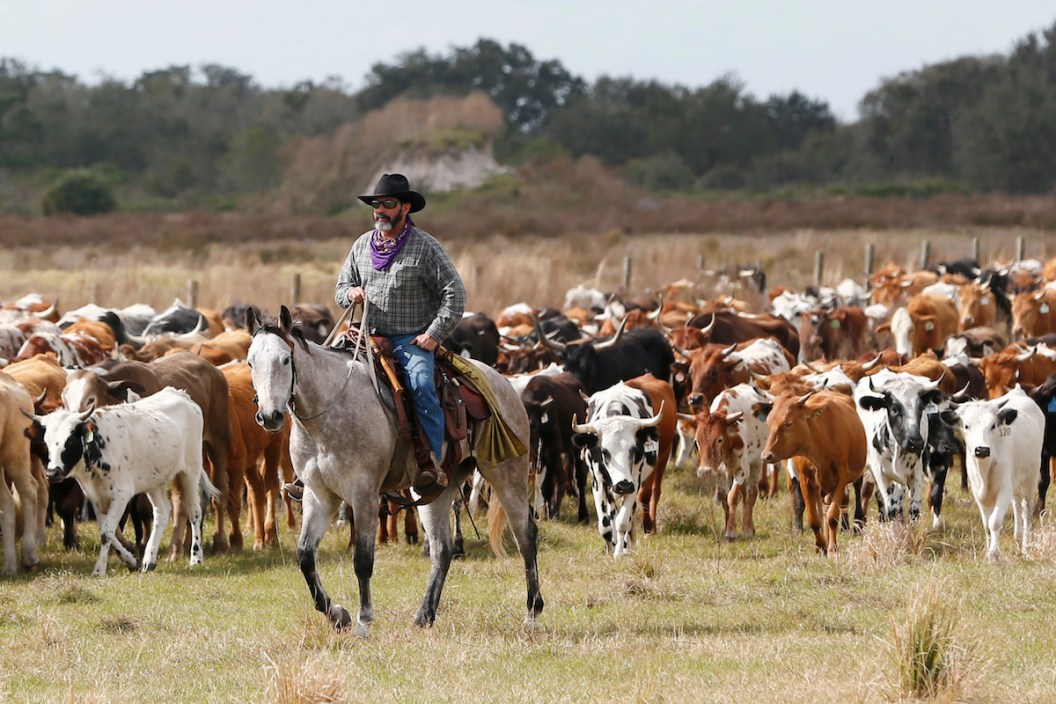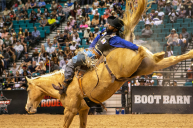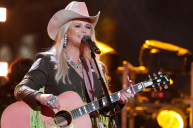The cowboy is the symbolic icon of American West culture and dates back more than two centuries. What we know as the traditional cowboy arose in the 19th century. They are also known as horse wranglers, cowpunchers, cowhands, ranch hands and buckaroos, but the name "cowboy" was inspired from the original nickname, "cowpoke."
Videos by Wide Open Country
Today, being a real cowboy means living the ranching lifestyle, not just wearing their signature cowboy boots in the Old West or sporting a Stetson cowboy hat. Cattle operations are the largest single segment of American agriculture. More than 1 million beef producers in the U.S. are responsible for more than 94 million head of beef cattle. And there is a vast amount of sheep, goats, and horses that are raised in rural America. With all of that livestock to manage, the cowboy way of life is still essential to American society.
While most of us only see the Hollywood version of cowboys depicted in old Western movies, here are 15 regions in the US where cowboy culture is still alive and well.
1. Texas
Texas is known as the cowboy capital of the world. From South Texas mesquite trees to open prairies in the Panhandle, there are cowboys hard at work. There is still a great need on many Texan ranches to brand commercial cattle so that they can be identified. On other ranches, tagging and tattooing registered stock will suffice. But there is no surprise to Longhorns fans that working cattle is a year-round job that takes dedication and commitment to the well-being of all animals.
2. Kansas
Rural Kansas is home to both farming and ranching. The flatlands and gently rolling hills provide a beautiful landscape. If you've driven through rural Kansas, you know that there are miles between towns and sometimes even between houses. Between the corn fields, you will find cattle on feed and prairies. Being a cowboy in Kansas means you just understand the values of hard work.
Plus, Kansas is the home of Dodge City, one of the cowboy hotbeds we learned about from Hollywood.
3. Utah
Living the cowboy life starts at an early age for most. Working cattle, goats or sheep builds responsibility and character in children. Many cowboys in Utah raise their animals on the open range, where constant checking and nurturing is a necessity. While raising and selling livestock is a business for all cowboys, the memories and enthusiasm for animal husbandry isn't for sale.
4. Iowa
Iowans know that the cowboy life is important to their livelihoods. Waking up at dawn and working until dusk (or later) is part of being a cowboy. Raising animals isn't just checking the fences, although that's part of it. Keeping animals healthy is a 24/7 job that no cowboy takes for granted. Just ask one!
Iowa's also the birthplace of Buffalo Bill Cody.
5. Colorado
Like ranchers everywhere, Colorado cowboys care about the state's natural resources. It is not uncommon for these men and women to spend a week or more herding cattle from mountain range to mountain range to prevent them from causing damage to fragile ecosystems by staying in a single area too long.
6. Montana
Montana is home to some of the best grass in the country, and that means the cattle flourish all summer long. It's no secret that Montana is also home to some of the hardest working cowboys and cowgirls in the United States. With events designed to mirror everyday work, the Custer Ranch Rodeo showcases some of these rodeo cowboys and cowgirl's finest talents beyond horsemanship and bull riding.
7. Wyoming
With a picturesque landscape on the horizon, Wyoming cowboys saddle up on horses to check cattle and bring in the calves for branding and vaccinations. Don't let the beauty fool you, the work is hard and the days are long. But, there is no better place to work than the great outdoors.
8. North Dakota
Many rural areas have local rodeos that are designed to highlight some of the working cowboys' everyday job responsibilities. While rodeos have become an entertainment for many people, they still have their practical side for many cowboys. Roping calves in the wide open pastures, wrestling a steer that is on the move and breaking a horse (training it so you can ride it) are just a few of the events that simulate the cowboy lifestyle. Let's not forget about the hard work involved in a cattle drive either. Next time you watch a rodeo, keep in mind that many of the events are still used in the cowboy way of life.
9. South Dakota
Not all cowboys ride horses. It's true. While you find most images and stories about cowboys working cattle on horseback, there are many ranches that work cattle daily and do not own a single horse. By using a sorting stick, these cowboys work through the cattle and pen only those that need attention.
10. Florida
Don't let the beaches of Florida fool you. One of the largest ranches in the United States resides in the Sunshine State. With large amounts of rainfall, Florida cowboys have to be adept and ready for all types of weather. Florida actually has the longest history in cattle ranching.
11. Oklahoma
Oklahoma is home to the National Cowboy & Western Heritage Museum where you can learn about the cowboy culture of Oklahoma firsthand. Cowboys from Oklahoma definitely understand moving cattle from pasture to pasture to optimize grazing. Like cowboys from other regions, Okies tend to their herds on horseback and by foot. They also have rodeos that highlight skills learned and refined in everyday life.
12. New Mexico
New Mexico was a hub for cowboys in the Wild West. In the early and mid-1800s, cowboys worked the land as ranchers, law enforcement agents, buffalo hunters, railroad workers and more. Cowboys can still be found in New Mexico's rural and urban regions. Today, you can experience New Mexican cowboy culture at annual events like the New Mexico State Fair or the End of the Trail Cowboy Shooting Contest.
13. Arizona
Arizona is another Southwestern state that has a rich tradition of cowboy culture. During the 1800s, scores of cowboys worked, fought and died in Arizona. The legendary cowboy town of Tombstone, located on the Western edge of the state, helped create a mythos about the American cowboy that has shaped American culture. Today, you can find Arizona cowboys working on cattle ranches and in Arizona's gorgeous parks, like the Grand Canyon pictured above.
14. The Pacific Northwest (Washington, Oregon, Idaho)
The Pacific Northwest has a cowboy history that stretches back more than a hundred years. The region's first cowboys were called vaqueros, a Spanish term for horse-mounted livestock herders. In the 1800s, Northwest beef was sold as far east as Chicago. They also tended sheep. Modern Northwestern cowboys continue to work ranches across Oregon, Washington, and Idaho. For an authentic slice of cowboy culture, head to an annual rodeo like the Pendleton Roundup in Oregon.
Read More: Dolly Parton's Dixie Stampede Drops 'Dixie' from Name Following Criticism
15. Louisiana
The cowboys of Louisiana have a unique set of challenges unlike their counterparts in the West. Bayou cowboys in southern Lousiana have adapted to the region's swamps and dense marshes. They use longer reins to manage horses to avoid kicks from horses moving out of swampy terrain. Their horses have a better a stronger resistance to mosquitoes. In Northern Louisiana, cowboys are just as tough. They've learned how to cultivate their cattle operations in a piney landscape. Lousiana also has a number of rodeos throughout the year, including the Angola Rodeo, where prisoners ride the bulls.
There are many more regions in the United States where authentic cowboys live off the land, care for their animals and enjoy an evening at the rodeo to show off their skills. These pockets of true country life can be found from New York to California and throughout the rich heartland in states like Nebraska. So next time you are looking for a reason to get back to your roots, look outside the big city life. You might be surprised what you find nearby.
This story previously ran on Oct. 5, 2019.




